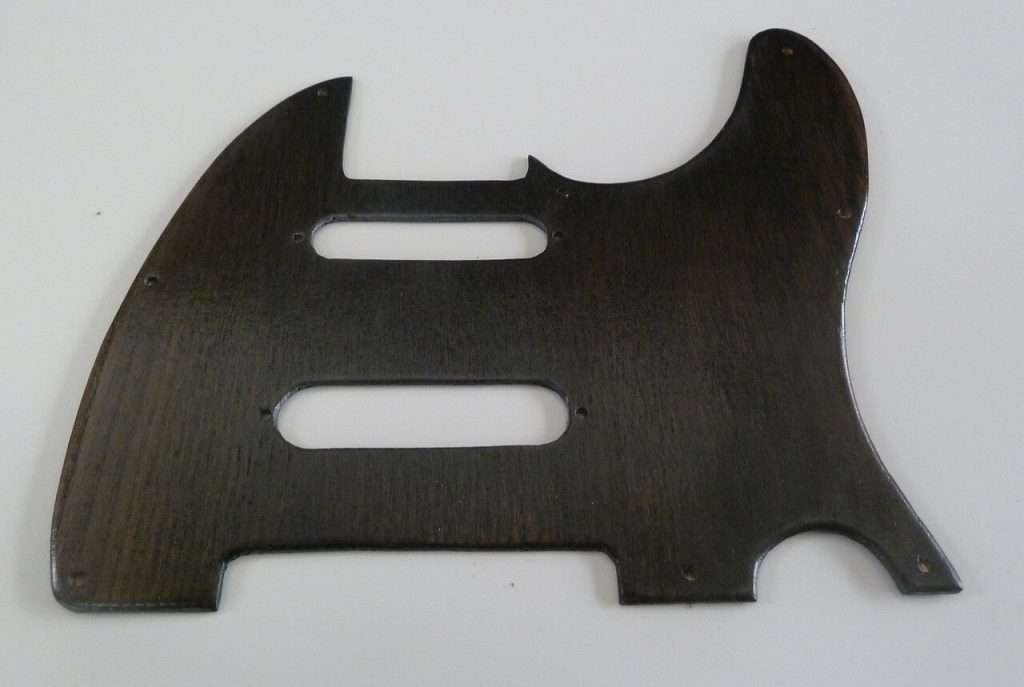
The first thing you should know about your guitar, its construction etc. is that it has a number of protective guards to prevent damage from happening while playing it in any way (except for string breaking).
The most important one is called pickguard which actually covers over half of the strings area.
This guard protects each individual string against being damaged by being hit directly with an unglued finger or other sharp objects.
It also prevents string loosening up as well as the possibility of dropping down accidentally when picking or strumming.
Another less important but still very useful protection mechanism is the bridge plate, made out of plastic material: this plate sits between the neck and the headstock and provides additional layer of defence against accidental hits.
If we take into consideration all these safety measures, then it becomes clear why you need a good quality guitar pickguard to protect not only the guitars’ body but every single part of them too.
WHAT MATERIALS ARE USED FOR PICKGUARDS?
There are many different ones available today – wood, metal, synthetic plastics, rubber… Most common choice nowadays is usually some type of hardwood such as rosewood, maple or mahogany.
These woods have been proven to be more durable than others so they can withstand harsher conditions. A lot of people prefer their pickguards to look like real wood because of their better aesthetics.
On top of that natural elements do play a big role in keeping the instrument in perfect condition and if someone likes to keep things natural, he may choose to go for wooden pickguard instead of the cheaper alternatives.
As far as I’m concerned I personally would never buy anything else than solid wood pickguard because after several years my old one started cracking under pressure, even though it was just glued together but at least it had lasted much longer than expected.
WHAT DOES IT ACTUALLY DO?
The main purposes of a pickguard are preventing scratches on the body of the guitar and, additionally, to be used as a decoration.
When we play with a pick we don’t have time to be careful about not touching the guitar with that pick: if we hit the body near the strings again and again, though, there will be lots of scratches in the long run, and the pickguard can prevent this by protecting the most exposed area.
This becomes a lot worse if we use very thick plectrums or other materials, for example metallic ones or other aggressive materials.

TYPES OF PICKGUARDS
SOLID BODY PICKGUARDS
These are made for “defending” the finish of the guitar from scratches and has lots of options, given that in a solid body guitar the impact of a pickguard on the sound is very minimal (and many say that it doesn’t affect the tone at all).
On these guitars you can also find the most wide variety of shapes, going from the Fender-like pickguard that covers most of the body to other less evident ones.
Another purpose of the pickguard in this type of electric guitars is to hide and cover the inner parts where the electronics (potentiometers and other electronical components) are positioned.
ACOUSTIC PICKGUARD
In an acoustic guitar the choices to make are often limited by the fact that in this type of guitar the sound is made through the resonation of the body itself: for this reason, anything that is in the body, or also in direct contact with that, can affect the sound.
For this reason, acoustic pickguards are usually thinner and cover less body, because a thick and big one could influence and make a worse overall sound when we play.
The two main downsides of a “bad” pickguard on an acoustic guitar are:
- Dampened tone and less articulated sound;
- Worse resonation and less volume and acoustic
FLOATING PICKGUARD
This type of pickguard is often found on archtop electric guitars (for this reason it’s also called “archtop pickguard): it’s made with the pickguard but also with metal support brackets that let you adjust the height above the guitar’s body itself.
ARE THEY ALWAYS NECESSARY?
Guitars don’t always have a pickguard; one of the most common example is the classical guitar, because this is usually played with fingers alone, and therefore you don’t have picks or other “dangerous stuff” approaching the body and the wood/finish of that guitar.
For this reason you don’t need one because fingers aren’t a major danger for the guitar itself.
Beyond this case, some prefer to dismount the ones on electric or acoustic guitars, because:
- it is considered useless
- it is in the way when you play and may slow down your picking (for example with an archtop, where this is above the body of the guitar);
- you want a better tone on acoustic (and also for some experimentation);
- you actually prefer a scratched body and a more vintage feel
CONCLUSION: PICKGUARDS AND GUITAR
In short, a pickguard is not a must in a guitar, and you can as well dismount them if you feel that they make a worse sound or you simply want to try without: they’re not always necessary (beyond the electric guitar’s ones, where they also have the important function of guarding the inner electronics), so you may as well try something different.
As always, there’ s not a definitive rule in music, just the best thing for your own sound, so don’t worry about norms and try to find what it’s better for you alone!
